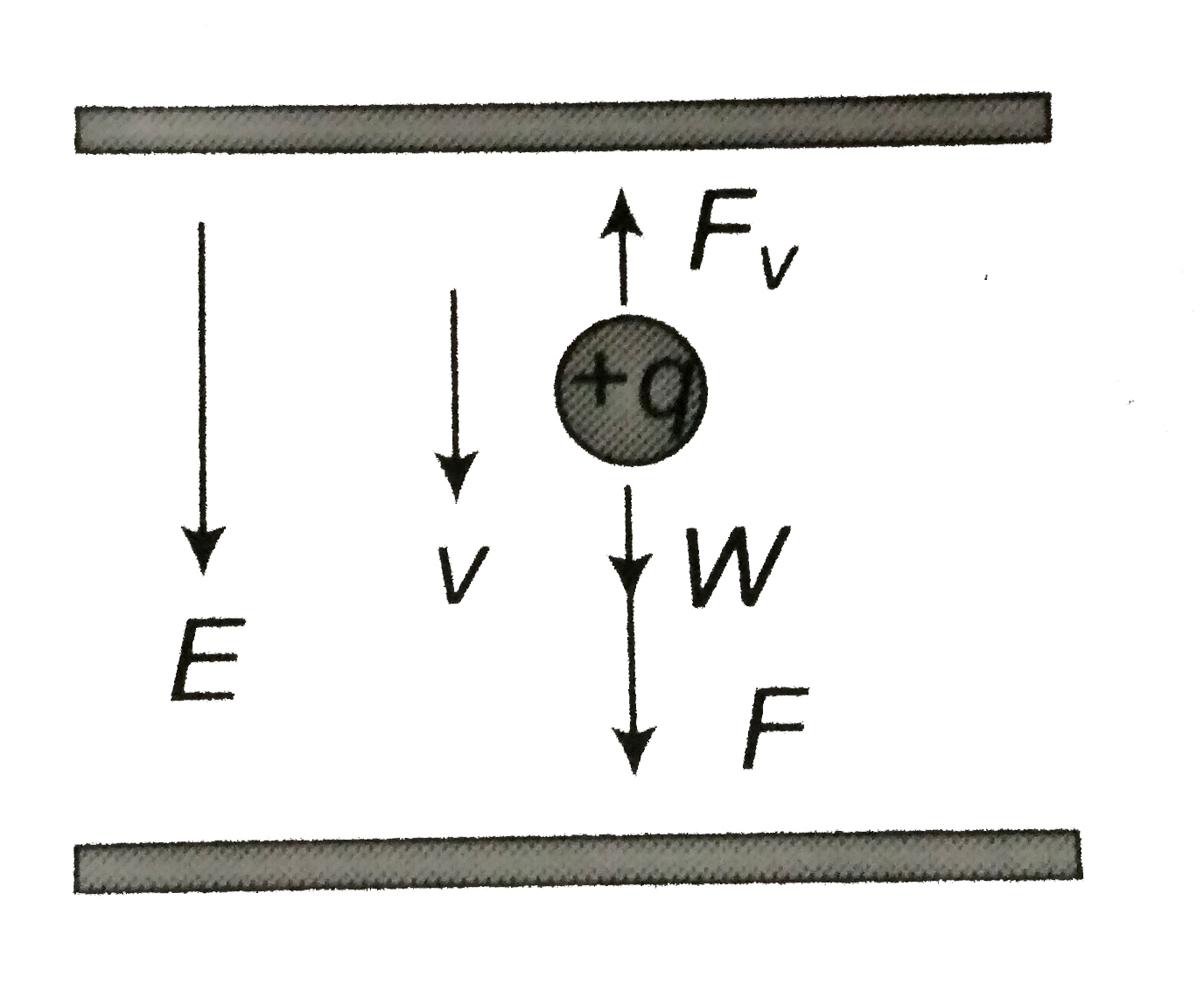Two parallel conducting plates , a distance d apart, are held horizontally one above the other in air . Between parallel plates , electric field E is uniform and directed vertically downwards . A spherical ball of radius r, made of a material of density σ falls with constant velocity v. the coefficient of viscosity of air is η and density of air is negligible in comparision of σ. Find electric charge on ball assuming it to be positive.
The forces acting on ball are
(a) Weight of ball W=mg=σ.43πr3g , downward
(b) Electric force F=qE , downward
(c ) Viscous force Fv=6πηrv , upward
(d) Upthrust is negligible because density of air is very small.
Since ball is falling with constant velocity , net force =0
W+F=Fv
σ.43r3g+qE=6πηrv
q=6πηrv−σ.43πr3gE

Topper's Solved these Questions
Similar Questions
Between two horizontal parallel plates, uniform electric field E directed vertically downward. A charged particle (q,m) remains in equilibrium in vaccum between the plates. Find shortage/excess of electrons in the charged particle .
View SolutionTwo plane parallel conducting plates 1.5×10−2m apart are held horizontal one above the other in air. The upper plate is maintained at a positive potential of1.5kV while the other plate is earthed. Calculate the number of electrons which must be attached to a small oil drop of mass 4.8×10−15kg between the plates of move the drop with constant speed. Neglect the density and viscosity of air.
View Solution
Knowledge Check
- Question 1 - Select One
A small spherical body of radius r and density ρ moves with the terminal velocity v in a fluid of coefficient of viscosity η and density σ . What will be the net force on the body?
A4π3r3(ρ−σ)gB6πηrvC0Dinfinity - Question 2 - Select One
Spherical balls of radius R are falling in a viscous fluid of viscosity η with a velocity v. The retarding viscous force acting on the spherical ball is
Adirectly proportional to R but inversely proportional to velocity vBdirectly proportional to both radius R and velocity vCinversely proportional to both radius R and velocity vDinversely proportional to R but directly proportional to velocity v - Question 3 - Select One
Spherical balls of radius R are falling in a viscous fluid of viscosity η with a velocity v. The retarding viscous force acting on the spherical ball is
Adirectly proportional to R but inversely proportional to vBdirectly proportional to both radius R and velocity vCinversely proportional to both radius R and velocity vDinversely proportional to R but directly proportional to velocity v
The electric field (→E) between two parallel plates of a capacitor will be uniform if.
View SolutionSpherical balls of radius 'R' are falling in a viscous fluid of viscosity 'η' with a velocity 'v'. The retarding viscous force acting on the spherical ball is
View SolutionA drop of water of radius r is falling rhough the air of coefficient of viscosity η with a constant velocity of v the resultant force on the drop is
View SolutionA parallel plate air capacity 'C' farad, potential 'V' volt and energy 'E' joule . When the gap between the plates is completely filled with dielectric
View SolutionTwo large parallel conducting plates are placed close to each other ,the inner surface of the two plates have surface charge densities +σ and −σ .The outer surfaces are without charge.The electric field has a magnitude of
View Solution

